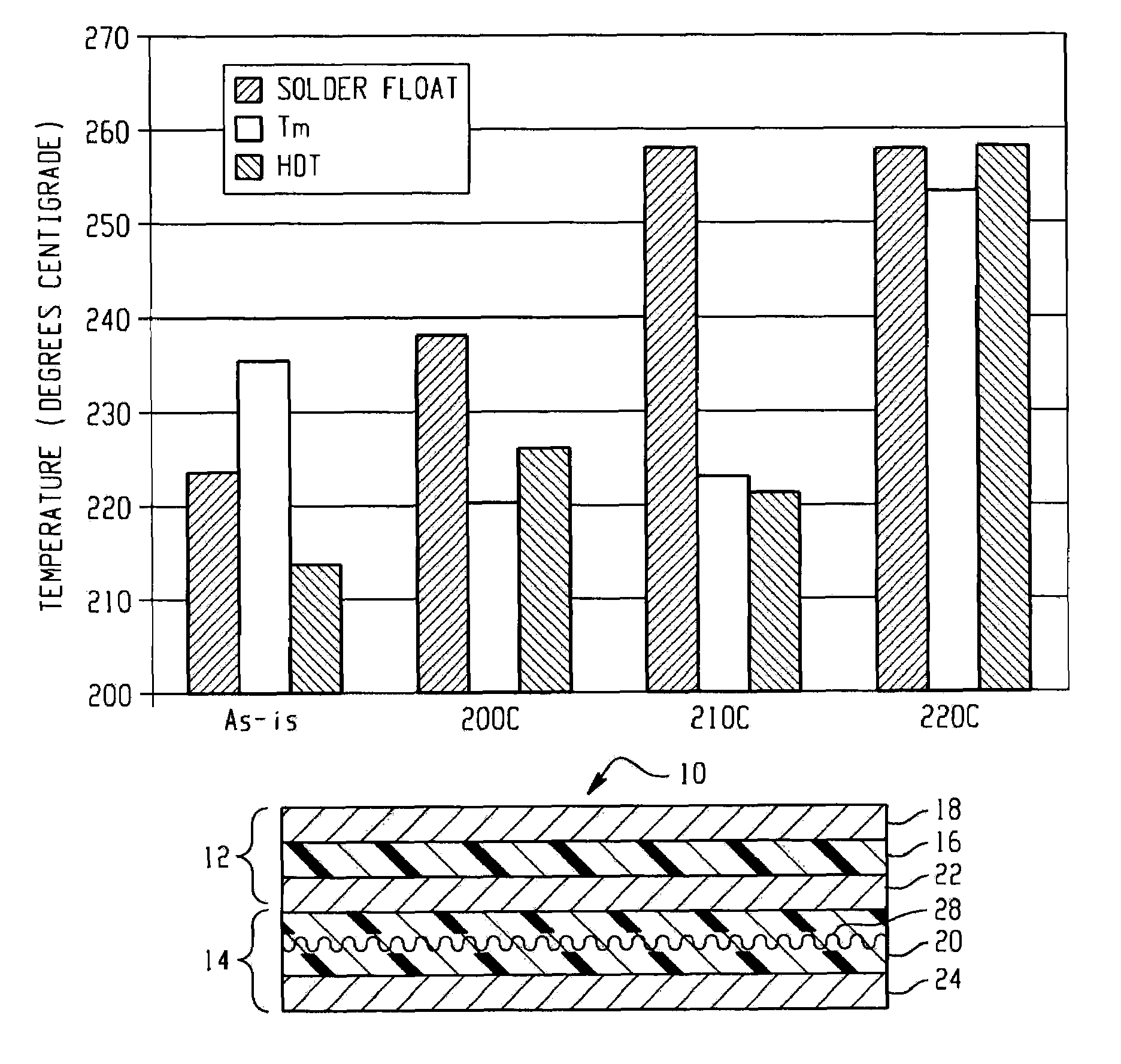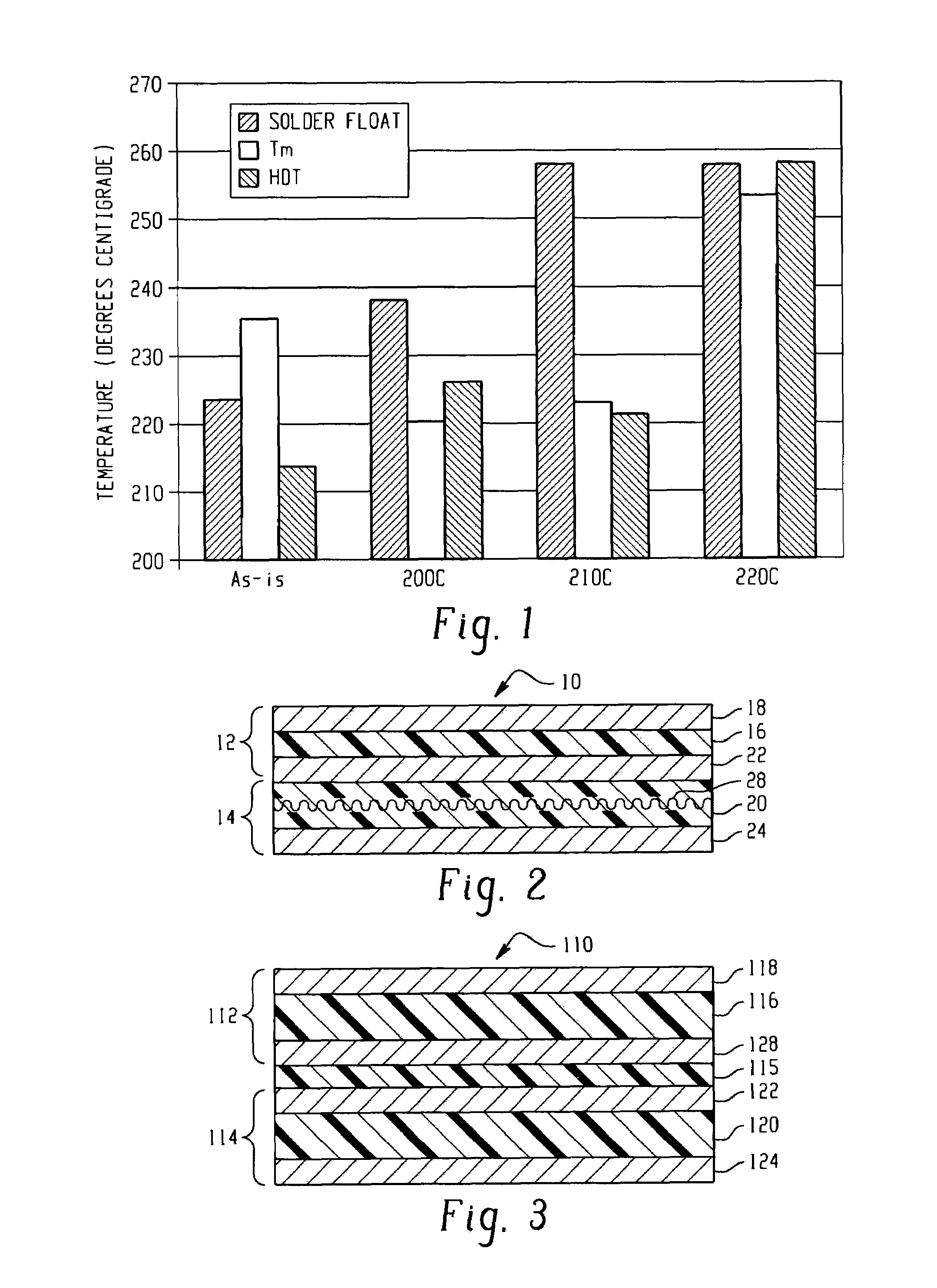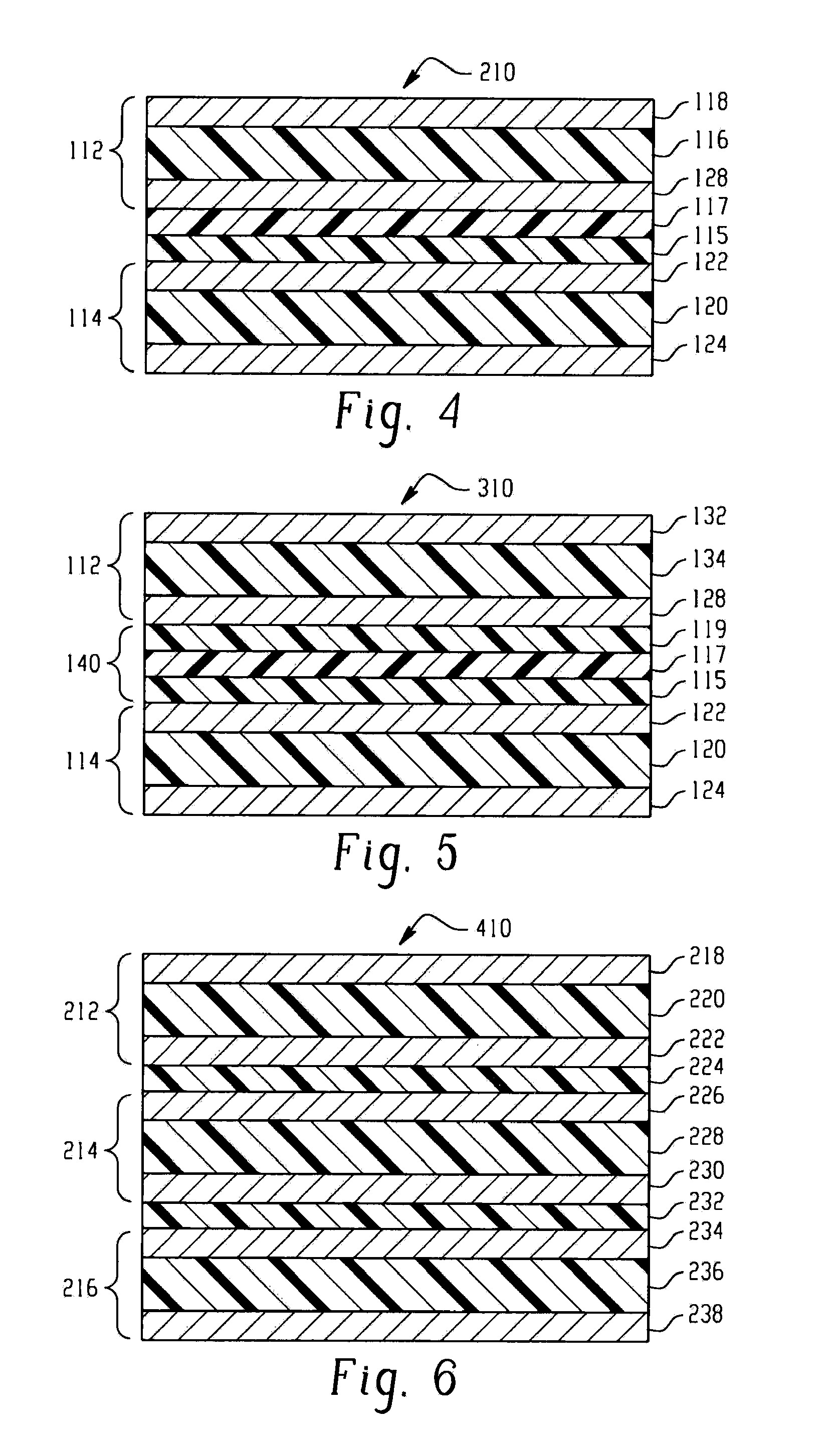Method for making a multilayer circuit
a multi-layer circuit and circuit technology, applied in the field of multi-layer circuits, can solve the problems of limiting the utility of circuit laminates, not divulging how to make circuit laminates into multi-layer circuits, and dimensional distortion of parts,
- Summary
- Abstract
- Description
- Claims
- Application Information
AI Technical Summary
Benefits of technology
Problems solved by technology
Method used
Image
Examples
example 1
Increasing the temperature resistance of Vectra LKX 1112 Liquid Crystalline Polymer Bond Ply
[0061]To demonstrate the increase in practical multi-layer circuit properties that are achievable with a post-lamination annealing step, the following experiment was conducted. Two sheets of 17-micrometer thick NT-TOR copper foil (manufactured by Circuit Foils Luxembourg) were laminated together with a 50-micrometer thick sheet of liquid crystalline polymer bond ply Vectra® LKX1112 liquid crystalline polymer (Ticona Corporation). Vectra LKX1112 liquid crystalline polymer exhibits a melting point (as measured by the peak value of the melting point by differential scanning calorimetry (DSC)) of 232° C. The press temperature program began with the press pre-heated to 95° C., increasing the temperature to 230° C. at a rate of 3.3° C. / minute and a pressure of 400 psi), holding the press for 15 minutes at 230° C., and then cooling the press to room temperature at a rate of 3.3° C. / minute.
[0062]Four...
example 2
Multiple Sequential Multi-Layer Laminations with Rogers R / Flex 3800 LCPfilm.
[0067]The following example demonstrates sequential lamination using liquid crystalline polymer resin coated conductive foils and the improvement in the method achieved by annealing the multi-layer circuit subassemblies after lamination.
[0068]A circuit comprising Rogers R / flex 3800 liquid crystalline polymer film as the dielectric layer, and which is clad on both sides with copper foil is available from Rogers Corporation under the trade name R / flex 3850®. The liquid crystalline polymer circuit substrate in this material exhibits a nematic melting point as measured by DSC of 315° C. A circuit substrate having a Rogers R / flex 3800 liquid crystalline polymer film as the dielectric layer, and which is clad on one side with copper foil is available from Rogers Corporation under the trade name R / flex 3600®. The liquid crystalline polymer substrate in this material exhibits a nematic melting point of 290° C. as me...
PUM
| Property | Measurement | Unit |
|---|---|---|
| melting point | aaaaa | aaaaa |
| melting point | aaaaa | aaaaa |
| melting point | aaaaa | aaaaa |
Abstract
Description
Claims
Application Information
 Login to View More
Login to View More - R&D
- Intellectual Property
- Life Sciences
- Materials
- Tech Scout
- Unparalleled Data Quality
- Higher Quality Content
- 60% Fewer Hallucinations
Browse by: Latest US Patents, China's latest patents, Technical Efficacy Thesaurus, Application Domain, Technology Topic, Popular Technical Reports.
© 2025 PatSnap. All rights reserved.Legal|Privacy policy|Modern Slavery Act Transparency Statement|Sitemap|About US| Contact US: help@patsnap.com



